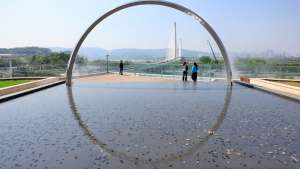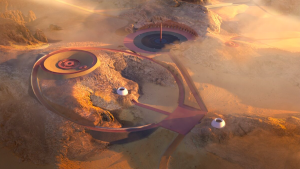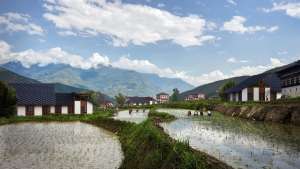Danish innovators Mikkel Kjaer and Ronnie Markussen, of Human Habitat, have designed The Impact Farm, a farm that can be transported and installed anywhere in less than 10 days.
The flat-packed, pop-up farms are designed to take advantage of under-utilised urban space and create a resource-efficient production facility that yields high quality, pesticide-free fresh produce such as herbs, greens, micro-greens and fruiting plants for urban populations.
The Impact Farm is delivered in a shipping container that consists of an assembly kit of pre-made components. When the components are put together they expand to become a two-storey, vertical hydroponic (soil-free) farm, with the shipping container forming a central role in the design. It is completely self-sufficient in terms of water, heat and electricity requirements.
Urban farming is a contemporary practice that describes the agricultural cultivation in and around urban locations. One of the challenges to urban farming is the lack of open space, especially in cities with a high population density. The Danish urban design firm had designed The Impact Farm so that it can easily be taken apart and packed for relocation.
The duo designed The Urban Farm to lower the ecological footprint of food production, increase food security, create jobs and easily adapt to changes in the urban landscape.
The farm could produce nearly three tonnes of herbs and micro-greens per year to independent businesses looking to sell to restaurants and markets. And for larger, community-driven projects such as schools and nursing home feeding projects, the yield could double to six tonnes per year.









